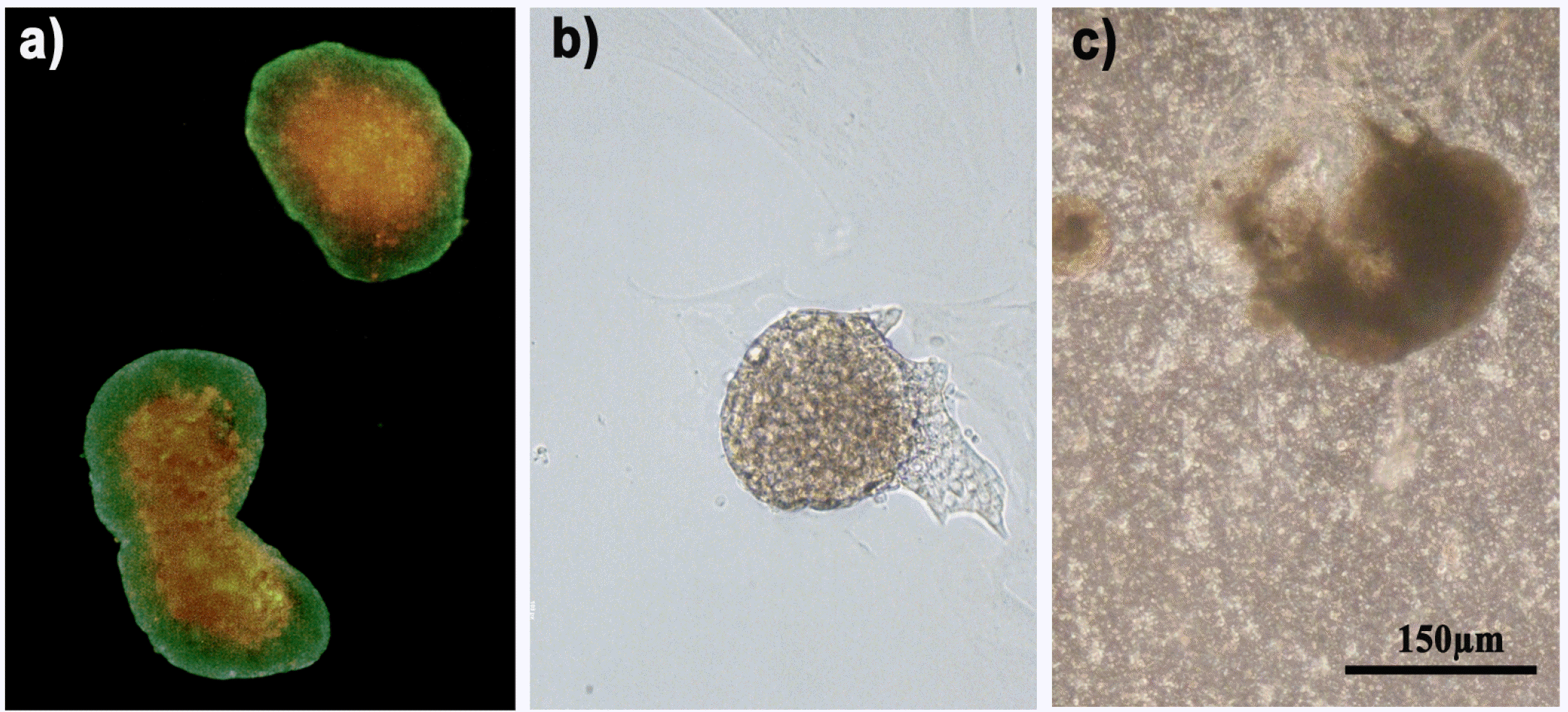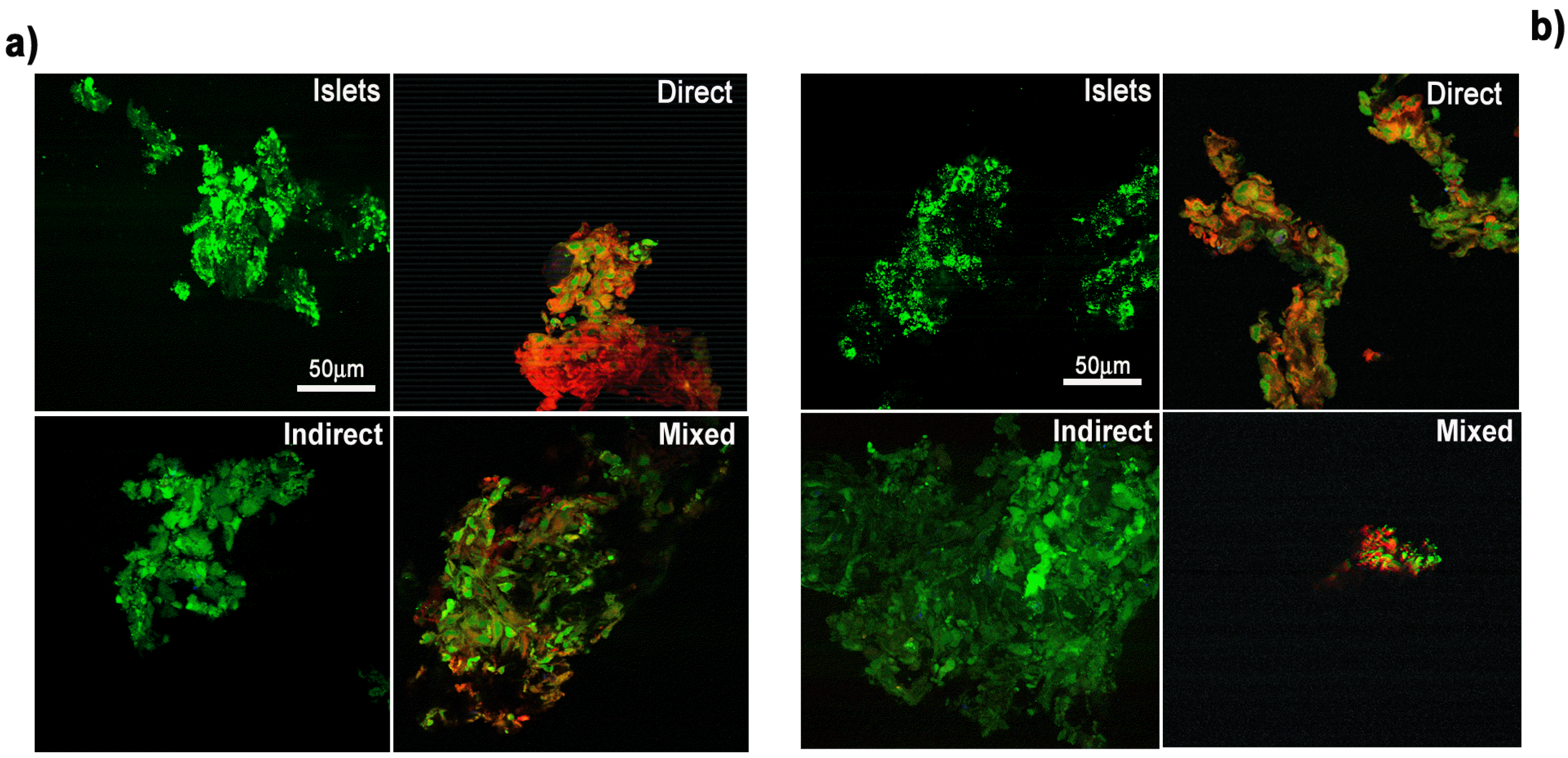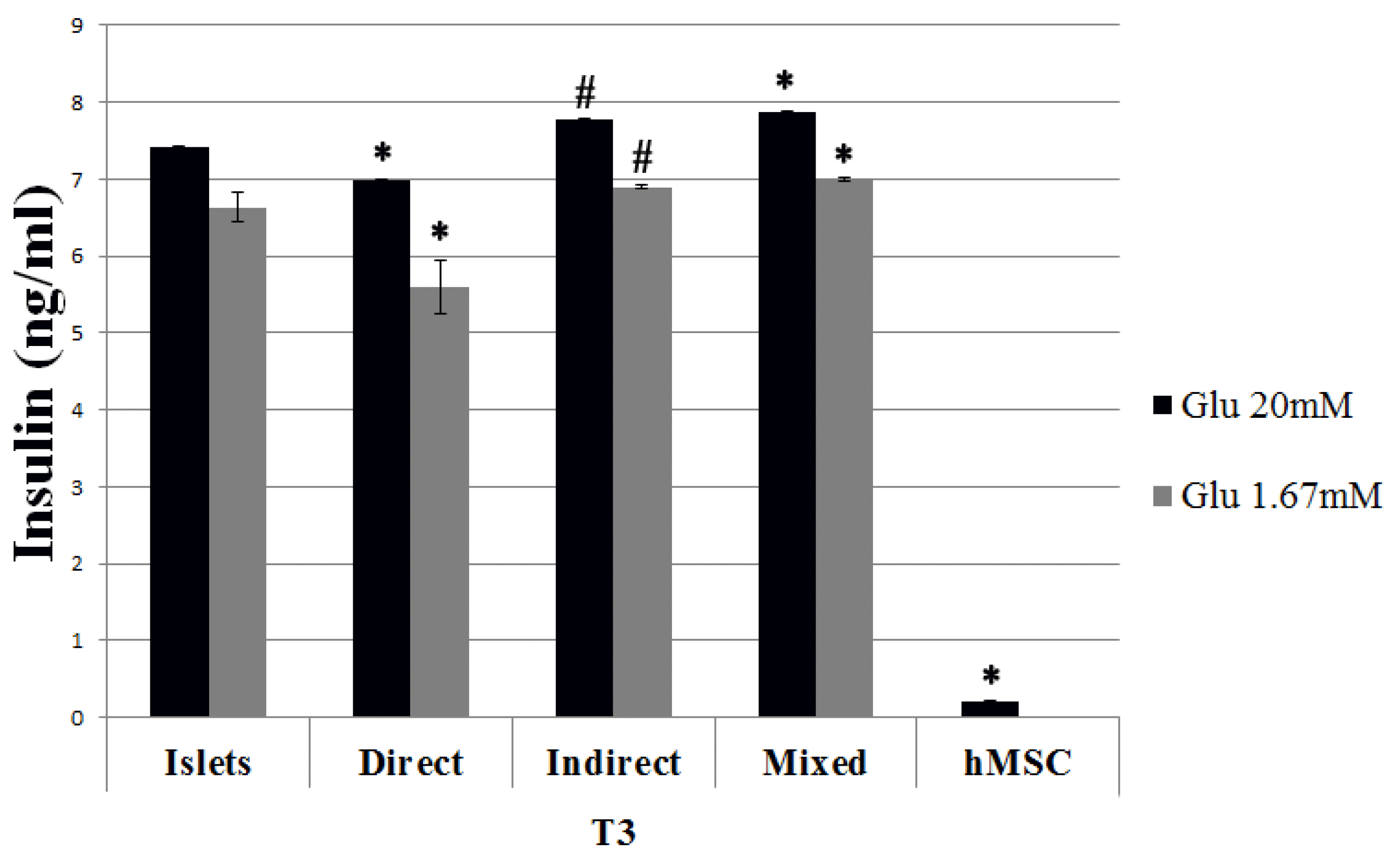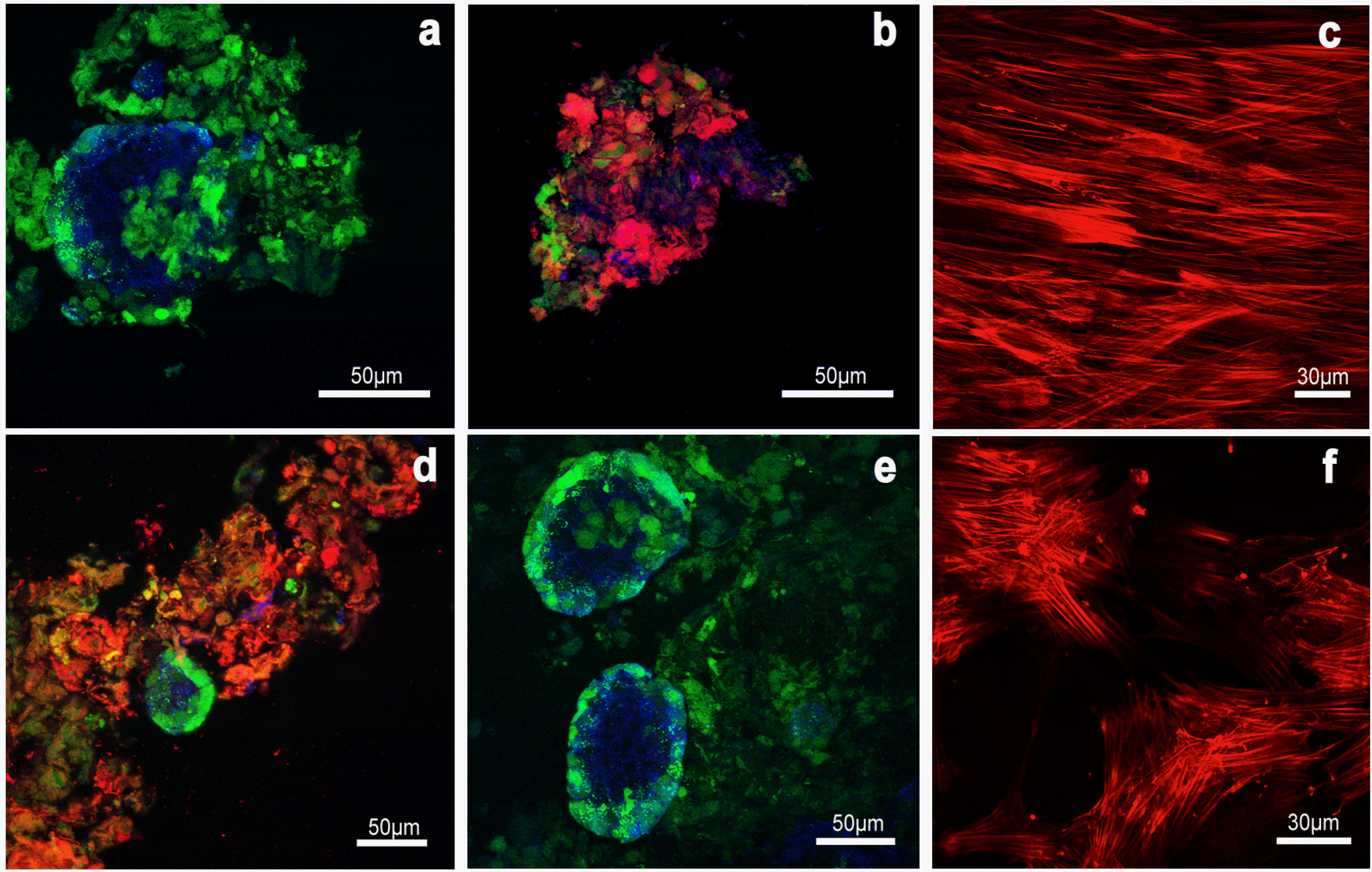3. Ezquer F, Ezquer M, Contador D, Ricca M, Simon V, Conget P. 2012; The antidiabetic effect of mesenchymal stem cells is unrelated to their transdifferentiation potential but to their capability to restore Th1/Th2 balance and to modify the pancreatic microenvironment. Stem Cells. 30:1664–1674. DOI:
10.1002/stem.1132. PMID:
22644660.

4. Mujica-Mota MA, Patel N, Saliba I. 2018; Hearing loss in type 1 diabetes: are we facing another microvascular disease? A meta-analysis. Int J Pediatr Otorhinolaryngol. 113:38–45. DOI:
10.1016/j.ijporl.2018.07.005. PMID:
30174007.

5. Sanlioglu AD, Altunbas HA, Balci MK, Griffith TS, Sanlioglu S. 2013; Clinical utility of insulin and insulin analogs. Islets. 5:67–78. DOI:
10.4161/isl.24590. PMID:
23584214. PMCID:
PMC4204021.

6. Yeung TY, Seeberger KL, Kin T, Adesida A, Jomha N, Shapiro AM, Korbutt GS. 2012; Human mesenchymal stem cells protect human islets from pro-inflammatory cytokines. PLoS One. 7:e38189. DOI:
10.1371/journal.pone.0038189. PMID:
22666480. PMCID:
PMC3364233.

7. Emamaullee JA, Shapiro AM. 2007; Factors influencing the loss of beta-cell mass in islet transplantation. Cell Transplant. 16:1–8. DOI:
10.3727/000000007783464461. PMID:
28880676.

8. Chen Y, Shao JZ, Xiang LX, Dong XJ, Zhang GR. 2008; Mesenchymal stem cells: a promising candidate in regenerative medicine. Int J Biochem Cell Biol. 40:815–820. DOI:
10.1016/j.biocel.2008.01.007. PMID:
18295530.

9. Uccelli A, Moretta L, Pistoia V. 2008; Mesenchymal stem cells in health and disease. Nat Rev Immunol. 8:726–736. DOI:
10.1038/nri2395. PMID:
19172693.

10. Murphy MB, Moncivais K, Caplan AI. 2013; Mesenchymal stem cells: environmentally responsive therapeutics for regenerative medicine. Exp Mol Med. 45:e54. DOI:
10.1038/emm.2013.94. PMID:
24232253. PMCID:
PMC3849579.

11. Zappia E, Casazza S, Pedemonte E, Benvenuto F, Bonanni I, Gerdoni E, Giunti D, Ceravolo A, Cazzanti F, Frassoni F, Mancardi G, Uccelli A. 2005; Mesenchymal stem cells ameliorate experimental autoimmune encephalomyelitis inducing T-cell anergy. Blood. 106:1755–1761. DOI:
10.1182/blood-2005-04-1496. PMID:
15905186.

13. Tchokonte-Nana V, Manda JK. 2018; Early islets and mesenchyme from an injured adult pancreas improve syngeneic engraftments and islet graft function in diabetic rats. Acta Histochem. 120:356–362. DOI:
10.1016/j.acthis.2018.03.008. PMID:
29622345.

14. Park KS, Kim YS, Kim JH, Choi B, Kim SH, Tan AH, Lee MS, Lee MK, Kwon CH, Joh JW, Kim SJ, Kim KW. 2010; Trophic molecules derived from human mesenchymal stem cells enhance survival, function, and angiogenesis of isolated islets after transplantation. Transplantation. 89:509–517. DOI:
10.1097/TP.0b013e3181c7dc99. PMID:
20125064.

15. Remuzzi A, Cornolti R, Bianchi R, Figliuzzi M, Porretta-Serapiglia C, Oggioni N, Carozzi V, Crippa L, Avezza F, Fiordaliso F, Salio M, Lauria G, Lombardi R, Cavaletti G. 2009; Regression of diabetic complications by islet transplantation in the rat. Diabetologia. 52:2653–2661. DOI:
10.1007/s00125-009-1537-y. PMID:
19789851.

16. Salvadè A, Belotti D, Donzelli E, D'Amico G, Gaipa G, Renoldi G, Carini F, Baldoni M, Pogliani E, Tredici G, Biondi A, Biagi E. 2007; GMP-grade preparation of biomimetic scaffolds with osteo-differentiated autologous mesenchymal stromal cells for the treatment of alveolar bone resorption in periodontal disease. Cytotherapy. 9:427–438. DOI:
10.1080/14653240701341995. PMID:
17786604.

17. Donzelli E, Lucchini C, Ballarini E, Scuteri A, Carini F, Tredici G, Miloso M. 2011; ERK1 and ERK2 are involved in recruitment and maturation of human mesenchymal stem cells induced to adipogenic differentiation. J Mol Cell Biol. 3:123–131. DOI:
10.1093/jmcb/mjq050. PMID:
21278199.

18. Scuteri A, Donzelli E, Rodriguez-Menendez V, Ravasi M, Monfrini M, Bonandrini B, Figliuzzi M, Remuzzi A, Tredici G. 2014; A double mechanism for the mesenchymal stem cells' positive effect on pancreatic islets. PLoS One. 9:e84309. DOI:
10.1371/journal.pone.0084309. PMID:
24416216. PMCID:
PMC3885554.

19. Zacharek A, Chen J, Cui X, Li A, Li Y, Roberts C, Feng Y, Gao Q, Chopp M. 2007; Angiopoietin1/Tie2 and VEGF/Flk1 induced by MSC treatment amplifies angiogenesis and vascular stabilization after stroke. J Cereb Blood Flow Metab. 27:1684–1691. DOI:
10.1038/sj.jcbfm.9600475. PMID:
17356562. PMCID:
PMC2796470.

20. Johansson A, Olerud J, Johansson M, Carlsson PO. 2009; Angiostatic factors normally restrict islet endothelial cell proliferation and migration: implications for islet transplantation. Transpl Int. 22:1182–1188. DOI:
10.1111/j.1432-2277.2009.00939.x. PMID:
19891047.

21. Beyth S, Borovsky Z, Mevorach D, Liebergall M, Gazit Z, Aslan H, Galun E, Rachmilewitz J. 2005; Human mesenchymal stem cells alter antigen-presenting cell maturation and induce T-cell unresponsiveness. Blood. 105:2214–2219. DOI:
10.1182/blood-2004-07-2921. PMID:
15514012.

22. Jiang XX, Zhang Y, Liu B, Zhang SX, Wu Y, Yu XD, Mao N. 2005; Human mesenchymal stem cells inhibit differentiation and function of monocyte-derived dendritic cells. Blood. 105:4120–4126. DOI:
10.1182/blood-2004-02-0586. PMID:
15692068.

24. Monfrini M, Donzelli E, Rodriguez-Menendez V, Ballarini E, Carozzi VA, Chiorazzi A, Meregalli C, Canta A, Oggioni N, Crippa L, Avezza F, Silvani S, Bonandrini B, Figliuzzi M, Remuzzi A, Porretta-Serapiglia C, Bianchi R, Lauria G, Tredici G, Cavaletti G, Scuteri A. 2017; Therapeutic potential of Mesenchymal Stem Cells for the treatment of diabetic peripheral neuropathy. Exp Neurol. 288:75–84. DOI:
10.1016/j.expneurol.2016.11.006. PMID:
27851902.

25. Figliuzzi M, Cornolti R, Perico N, Rota C, Morigi M, Remuzzi G, Remuzzi A, Benigni A. 2009; Bone marrow-derived mesenchymal stem cells improve islet graft function in diabetic rats. Transplant Proc. 41:1797–1800. DOI:
10.1016/j.transproceed.2008.11.015. PMID:
19545731.

26. Sakata N, Goto M, Yoshimatsu G, Egawa S, Unno M. 2011; Utility of co-transplanting mesenchymal stem cells in islet transplantation. World J Gastroenterol. 17:5150–5105. DOI:
10.3748/wjg.v17.i47.5150. PMID:
22215938. PMCID:
PMC3243880.

27. Jung EJ, Kim SC, Wee YM, Kim YH, Choi MY, Jeong SH, Lee J, Lim DG, Han DJ. 2011; Bone marrow-derived mesenchymal stromal cells support rat pancreatic islet survival and insulin secretory function in vitro. Cytotherapy. 13:19–29. DOI:
10.3109/14653249.2010.518608. PMID:
21142900.

28. Karaoz E, Ayhan S, Okçu A, Aksoy A, Bayazıt G, Osman Gürol A, Duruksu G. 2011; Bone marrow-derived mesenchymal stem cells co-cultured with pancreatic islets display
β cell plasticity. J Tissue Eng Regen Med. 5:491–500. DOI:
10.1002/term.342. PMID:
21604384.

29. Zavan B, Giorgi C, Bagnara GP, Vindigni V, Abatangelo G, Cortivo R. 2007; Osteogenic and chondrogenic differentiation: comparison of human and rat bone marrow mesenchymal stem cells cultured into polymeric scaffolds. Eur J Histochem. 51(Suppl 1):1–8. PMID:
17703587.
30. Scuteri A, Donzelli E, Foudah D, Caldara C, Redondo J, D'Amico G, Tredici G, Miloso M. 2014; Mesengenic differentiation: comparison of human and rat bone marrow mesenchymal stem cells. Int J Stem Cells. 7:127–134. DOI:
10.15283/ijsc.2014.7.2.127. PMID:
25473450. PMCID:
PMC4249895.

31. Wang G, Li Y, Wang Y, Dong Y, Wang FS, Ding Y, Kang Y, Xu X. 2014; Roles of the co-culture of human umbilical cord Wharton's jelly-derived mesenchymal stem cells with rat pancreatic cells in the treatment of rats with diabetes mellitus. Exp Ther Med. 8:1389–1396. DOI:
10.3892/etm.2014.1985. PMID:
25289028. PMCID:
PMC4186331.

32. Hou Y, Song C, Xie WJ, Wei Z, Huang RP, Liu W, Zhang ZL, Shi YB. 2009; Excellent effect of three-dimensional culture condition on pancreatic islets. Diabetes Res Clin Pract. 86:11–15. DOI:
10.1016/j.diabres.2009.07.010. PMID:
19679368.

33. Karaoz E, Genç ZS, Demircan PÇ, Aksoy A, Duruksu G. 2010; Protection of rat pancreatic islet function and viability by coculture with rat bone marrow-derived mesenchymal stem cells. Cell Death Dis. 1:e36. DOI:
10.1038/cddis.2010.14. PMID:
21364643. PMCID:
PMC3032304.

34. Duprez IR, Johansson U, Nilsson B, Korsgren O, Magnusson PU. 2011; Preparatory studies of composite mesenchymal stem cell islets for application in intraportal islet transplantation. Ups J Med Sci. 116:8–17. DOI:
10.3109/03009734.2010.524320. PMID:
21050099. PMCID:
PMC3039755.

35. Wei Z, Chen N, Guo H, Wang X, Xu F, Ren Q, Lu S, Liu B, Zhang L, Zhao H. 2009; Bone marrow mesenchymal stem cells from leukemia patients inhibit growth and apoptosis in serum-deprived K562 cells. J Exp Clin Cancer Res. 28:141. DOI:
10.1186/1756-9966-28-141. PMID:
19883517. PMCID:
PMC2779804.

36. Santos Nascimento D, Mosqueira D, Sousa LM, Teixeira M, Filipe M, Resende TP, Araújo AF, Valente M, Almeida J, Martins JP, Santos JM, Bárcia RN, Cruz P, Cruz H, Pinto-do-Ó P. 2014; Human umbilical cord tissue-derived mesenchymal stromal cells attenuate remodeling after myocardial infarction by proangiogenic, antiapoptotic, and endogenous cell-activation mechanisms. Stem Cell Res Ther. 5:5. DOI:
10.1186/scrt394. PMID:
24411922. PMCID:
PMC4055157.

37. Ichii H, Wang X, Messinger S, Alvarez A, Fraker C, Khan A, Kuroda Y, Inverardi L, Goss JA, Alejandro R, Ricordi C. 2006; Improved human islet isolation using nicotinamide. Am J Transplant. 6:2060–2068. DOI:
10.1111/j.1600-6143.2006.01452.x. PMID:
16827790.

38. Hajizadeh-Saffar E, Tahamtani Y, Aghdami N, Azadmanesh K, Habibi-Anbouhi M, Heremans Y, De Leu N, Heimberg H, Ravassard P, Shokrgozar MA, Baharvand H. 2015; Inducible VEGF expression by human embryonic stem cell-derived mesenchymal stromal cells reduces the minimal islet mass required to reverse diabetes. Sci Rep. 5:9322. DOI:
10.1038/srep09322. PMID:
25818803. PMCID:
PMC4377549.

39. Ren G, Su J, Zhang L, Zhao X, Ling W, L'huillie A, Zhang J, Lu Y, Roberts AI, Ji W, Zhang H, Rabson AB, Shi Y. 2009; Species variation in the mechanisms of mesenchymal stem cell-mediated immunosuppression. Stem Cells. 27:1954–1962. DOI:
10.1002/stem.118. PMID:
19544427.

40. Foudah D, Redondo J, Caldara C, Carini F, Tredici G, Miloso M. 2013; Human mesenchymal stem cells express neuronal markers after osteogenic and adipogenic differentiation. Cell Mol Biol Lett. 18:163–186. DOI:
10.2478/s11658-013-0083-2. PMID:
23430457. PMCID:
PMC6275956.










 PDF
PDF Citation
Citation Print
Print



 XML Download
XML Download